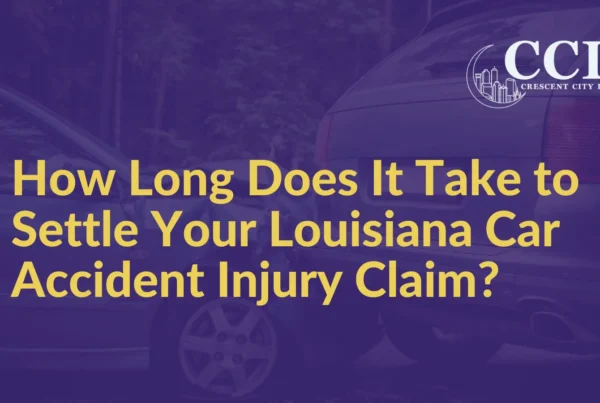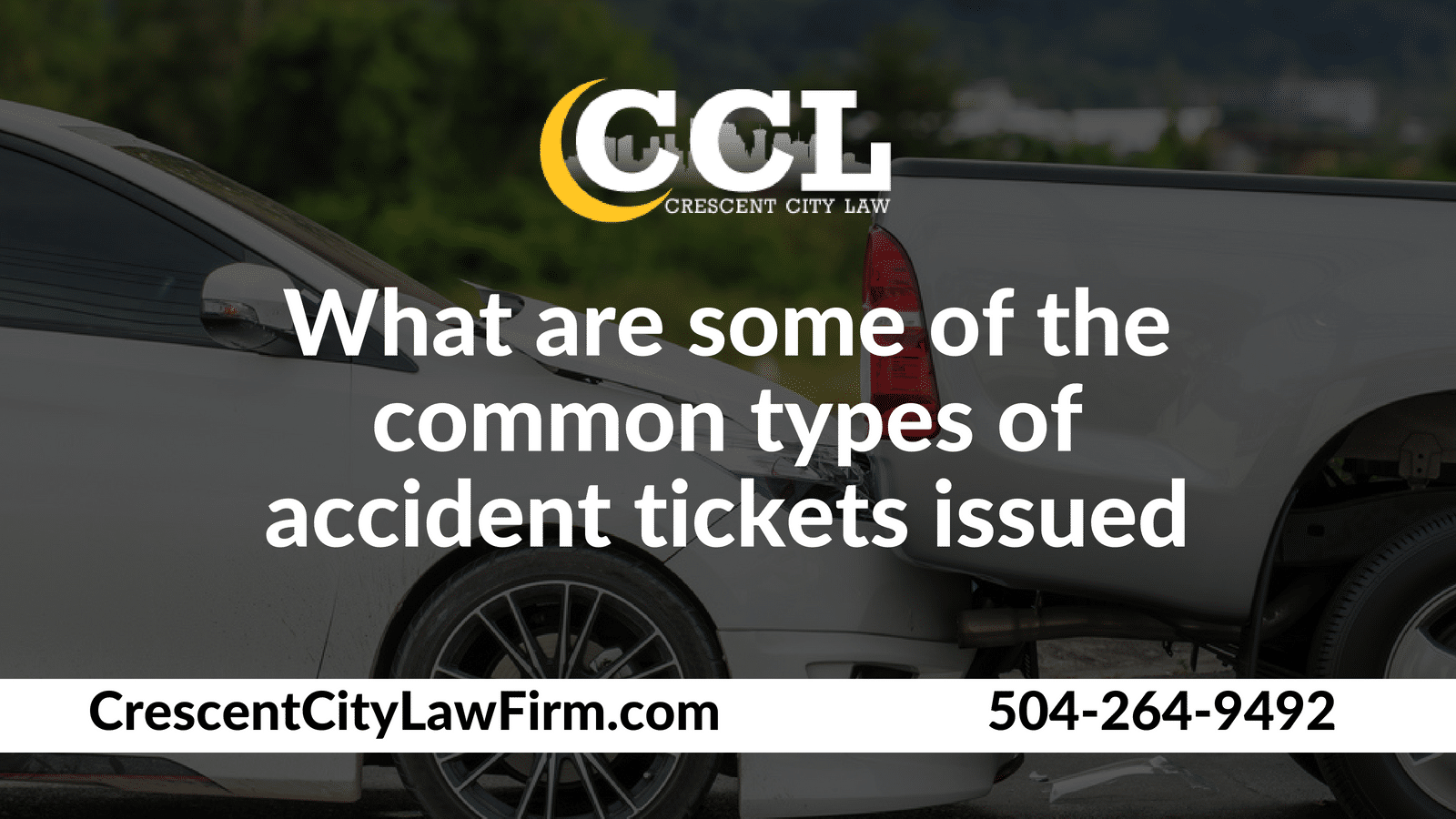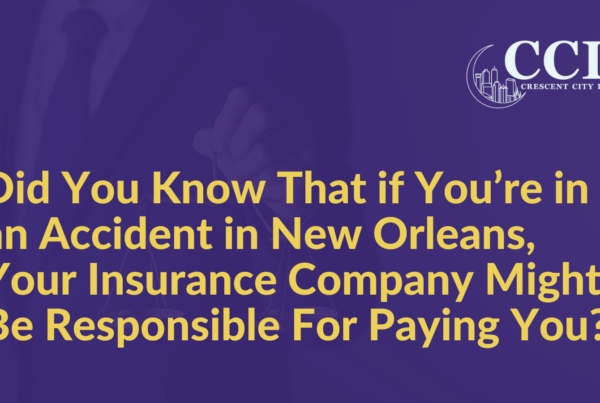Car accidents can be chaotic and overwhelming, leaving victims with injuries, property damage, and financial strain. In 2022, Louisiana recorded 42,351 vehicle injury crashes, and the fatality rate stood at 1.60 deaths per 100 million miles traveled.
At Crescent City Law, our team recognizes the difficulties of navigating car accident liability in Louisiana, particularly understanding the nuances between fault and no-fault systems. It is critical to have a knowledgeable car accident attorney, such as John Radziewicz, to ensure a strong representation and the best possible outcomes in your case.
In Louisiana, understanding whether the state operates under a fault or no-fault system is essential for car accident victims seeking compensation. Read through this blog to learn more.
Fault System vs. No-Fault System: What’s The Difference?
All states fall into one of two categories based on their use of “at-fault” or “no-fault” systems. The main differences between these systems are whether the victim can sue and who pays for the damages to the injured party.
- Fault System: In states that follow a fault-based system, the driver responsible for causing the accident is typically liable for the resulting damages. This means the at-fault driver’s insurance company is responsible for compensating the victims for their injuries and property damage.
- No-Fault System: In contrast, states with a no-fault system require each driver to seek compensation from their own insurance company, regardless of who caused the accident. Personal injury protection (PIP) coverage is mandatory in no-fault states, providing benefits for medical expenses and lost wages, regardless of fault.
Is Louisiana A No-Fault State Or An At-Fault State?
Louisiana uses an at-fault system to determine liability after a car accident. This means that the insurance companies of the drivers involved examine evidence to decide who is at fault.
However, the situation can be complex because Louisiana applies comparative negligence laws. Under these laws, fault can be divided between the drivers. According to Louisiana Civil Code Article 2323, a driver’s ability to recover damages after an accident is adjusted based on their contribution to the accident.
It’s also important to note that Louisiana has a statute of limitations (the prescriptive period) for all traffic accidents, requiring that any lawsuit against an at-fault driver be filed within one year of the accident. If this one-year period expires, you lose the right to sue the driver for personal injury and property damages related to that accident.
How Does Being in a Fault State Affect Car Accident Victims?
In fault-based states like Louisiana, the determination of fault plays a crucial role in the outcome of car accident claims. Here’s how being in a fault state affects car accident victims:
- Liability Determination: Establishing fault is essential for determining which party’s insurance company is responsible for covering the damages.
- Negligence Claims: Car accident victims in fault states have the option to pursue compensation through negligence claims against the at-fault party.
- Comparative Negligence: Louisiana follows a comparative negligence rule, allowing accident victims to recover compensation even if they are partially at fault for the accident. However, their compensation may be reduced based on their degree of fault.
Required Insurance Coverage for Louisiana Drivers and Vehicle Owners
Louisiana law requires drivers to carry certain minimum insurance coverage, including:
- Liability Coverage: $15,000 bodily injury coverage per person, $30,000 bodily injury coverage per accident, and $25,000 property damage coverage per accident. Many people have the minimum coverage, but lots of people carrying more than minimum coverage to protect themselves from excess judgments for serious injuries.
- Uninsured/Underinsured Motorist Coverage (UM/UIM): Coverage for injuries and damages caused by uninsured or underinsured drivers.
- Crescent City Law strongly recommends that anyone reading this obtain UM and UIM to protect themselves in the event of an accident with another driver who isn’t insured or is under insured in Louisiana.
Having an experienced attorney assist with these steps is essential for a comprehensive approach to your claim. They will also help you understand your options better so you can create a robust strategy to recover damages.
What Types of Damages Can You Recover in Louisiana?
In addition to wondering whether Louisiana is a no-fault state, many people also ask about the types of damages recognized under Louisiana law. According to Louisiana Civil Code Article 2315, damages from a collision are categorized into:
- Compensatory Damages: These cover losses due to another party’s negligence, such as medical expenses or vehicle repair costs. The goal is to return the injured party to the position they were in before the accident.
- Punitive Damages: These are intended to punish the negligent party. A skilled personal injury attorney can help determine if punitive damages apply in your case.
Louisiana vehicle accident victims may be entitled to various types of compensation as categorized above, including:
- Medical Expenses: Compensation for medical bills, including hospitalization, surgeries, medications, and rehabilitation.
- Lost Wages: Reimbursement for income lost due to time taken off work for recovery.
- Pain and Suffering: Compensation for physical pain, emotional distress, and diminished quality of life resulting from the accident.
- Property Damage: Coverage for repair or replacement of damaged vehicles and other property.
Having an experienced lawyer can make a significant difference in navigating these legal waters and ensuring that you receive the compensation you deserve.
How Do Car Accident Claims Operate in Louisiana’s Fault System?
In Louisiana’s fault-based system, car accident claims typically proceed as follows:
- Filing a Claim: The injured party files a claim with the at-fault driver’s insurance company or their own insurance company, depending on the circumstances.
- Investigation: The insurance company conducts an investigation to determine liability and assess the extent of damages.
- Negotiation: The parties involved may negotiate a settlement to compensate the injured party for their losses, including medical expenses, property damage, and lost wages.
- Litigation: If a settlement cannot be reached, the injured party may file a lawsuit against the at-fault driver to seek compensation through the court system.
Required Insurance Coverage for Louisiana Drivers and Vehicle Owners
Louisiana law requires drivers to carry certain minimum insurance coverage, including:
- Liability Coverage: $15,000 bodily injury coverage per person, $30,000 bodily injury coverage per accident, and $25,000 property damage coverage per accident. Many people have the minimum coverage, but lots of people carrying more than minimum coverage to protect themselves from excess judgments for serious injuries.
- Uninsured/Underinsured Motorist Coverage (UM/UIM): Coverage for injuries and damages caused by uninsured or underinsured drivers.
- Crescent City Law strongly recommends that anyone reading this obtain UM and UIM to protect themselves in the event of an accident with another driver who isn’t insured or is under insured in Louisiana.
How Can A Car Accident Lawyer in Louisiana Help?
Understanding Louisiana’s fault-based system is key for car accident victims looking to claim compensation for their injuries and damages. Knowing their rights helps victims seek fair compensation and start their recovery.
Car accidents can be extremely stressful due to high medical bills, vehicle damage, and emotional distress. The process often involves each party trying to recover damages and minimize their own fault, which can strain interactions with other drivers and insurance companies.
This is why it’s important to seek professional legal help and discuss the rates they offer for their services to determine what suits you best. A lawyer can reduce stress and ensure that your rights are maintained throughout the aftermath of a collision.
Contact Our Team at Crescent City Law Today!
If you’ve been involved in a car accident in Louisiana, consider consulting with a knowledgeable personal injury attorney to protect your rights and explore your legal options.
At Crescent City Law, we prioritize a client-centered approach by answering clients’ questions as accurately as we can and aiming to recover all possible damages for injured victims. With years of experience in the field, we strive to achieve the best outcomes for our clients.
Contact us at 504-264-9492 and schedule your initial consultation today.






